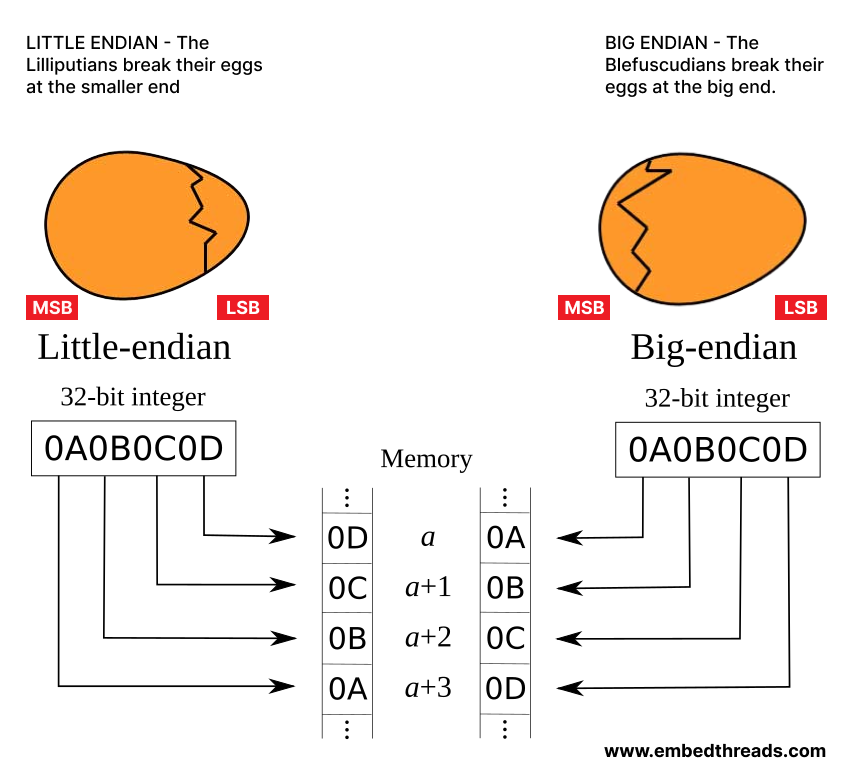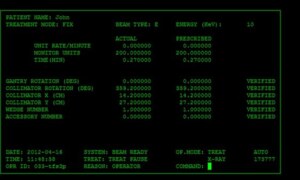In the computer world, where things can get a bit tricky, there are these terms called “Big-Endian and Little-Endian.” It might sound funny, but these names come from a made-up argument in a story called “Gulliver’s Travels” by Jonathan Swift. People in the story argued about how to crack open eggs, and that argument inspired the terms we use to talk about how computers organize their information.
Now, let’s take a simple journey to figure out what “little endian” and “big endian” really mean. It’s like understanding how computers sort their Lego bricks of data.
The Egg-Cracking Tale:
The concept of “endianness” comes from how computers store multi-byte data types in their memory. The terms “little endian” and “big endian” got their names from a pretend argument in “Gulliver’s Travels” about the right way to crack open a boiled egg. People in the story were divided on whether to start from the smaller or bigger end of the egg. Later, computer scientists borrowed these terms to describe how computers organize their data.

Making Sense of Little and Big:
The choice between little endian and big endian is like deciding whether to start reading a book from left to right or from right to left.
Little Endian:
- It’s like reading a book from left to right.
- Computers store the smallest part of a number first.
- It’s efficient and used in many personal computers.
Big Endian:
- It’s like reading a book from right to left.
- Computers store the biggest part of a number first.
- It’s more human-readable and often used in network communication.
Pros and Cons:
Little Endian:
- Good Side: Efficient for computers, easy to figure out where data starts.
- Not-So-Good Side: Programmers need to know about it for writing code that works on different computers.
Big Endian:
- Good Side: Easier for humans to understand, great for consistent communication between different systems.
- Not-So-Good Side: It might be a bit slower, and figuring out the data layout is not as straightforward.
Practical Tips:
- Memory Access: Little endian is faster for reading data, while big endian makes it easier to know the size of a variable.
- Network Communication: Big endian is commonly used in networks to make sure different computers can understand each other.
- Processor Architectures: Some computers, like x86, like little endian, while older ones, like Motorola 68k series, prefer big endian.
Conclusion:
So, there you have it – the tale of “little endian” and “big endian,” inspired by a fictional egg-cracking dispute. Understanding these terms is like having a secret decoder for computer language. Whether it’s the efficient little endian or the more human-friendly big endian, each has its strengths and quirks.
As we navigate the world of computer data, it’s a bit like knowing the unique language each computer speaks. The egg story, though whimsical, teaches us that even in the complex realm of computer science, inspiration can come from the simplest places.
Now, armed with the knowledge of little and big endian, you’re ready to tackle the intricacies of computer memory and create code that dances seamlessly across different systems. It’s a bit like mastering the art of cracking eggs – once you know the trick, everything falls into place. Happy coding!

